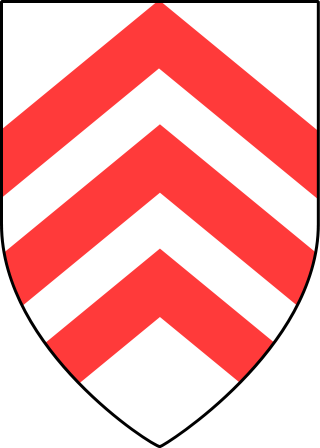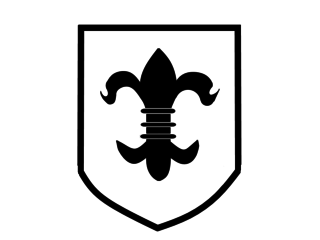
The 22nd Infantry Division, which soon became the 22nd Air Landing Division, was a specialized German infantry division in World War II. Its primary method of transportation was gliders. The division played a significant role in the development of modern day air assault operations. Towards the end of the war, the formation was reshaped into the 22nd Volksgrenadier Division.

The 716th Static Infantry Division was a World War II, German Army infantry division. It was raised on May 2, 1941, and sent to German-occupied France in June 1941. Many of the division's troops were elderly Germans and conscripts from other German-occupied countries. The division also had some young German conscripts as well. As a bodenständig it was not equipped with the standard configuration of vehicles and heavy weapons. Much of the division's artillery and anti-tank guns were from captured armaments.

The 91st Air Landing Division was a German Army infantry division in World War II.

The 3rd Infantry Division was an infantry division of the German Army that fought in World War II. The division was established under the cover name Wehrgauleitung Frankfurt in 1934 by expanding the 3rd Division of the Reichswehr. It was redesignated Kommandant von Frankfurt shortly afterward, and took on its bona fide name when the formation of the Wehrmacht was announced in October 1935. In March 1939 the division took part in the invasion and occupation of Czechoslovakia.

The 6th Infantry Division was a unit of the German Army during World War II.

The 26th Infantry Division was a pre-World War II German Infantry Division of the 1st mobilisation wave. It was mobilised for World War II on September 26, 1939, disbanded on September 10, 1944, near Radom and reformed as the 26th Volksgrenadier Division on September 17, 1944, near Poznań by absorption of the new 582nd Volksgrenadier Division of the 32nd mobilisation wave. Remnants of the Division entered U.S. captivity in the Harz region in 1945.

A first 277th Infantry Division was ordered to form on May 22, 1940, as part of the 10th mobilisation wave, but this order was rescinded after the French Surrender. A new 277th Infantry Division was formed in Croatia on November 17, 1943, as part of the 22nd mobilisation wave, the division was destroyed in the Battle of Normandy in August 1944. A third, 277th Volksgrenadier Division was formed on September 4, 1944, in Hungary by redesignation of the newly formed 574th Volksgrenadier Division of the 32nd mobilisation wave. In 1945 the division entered U.S. captivity in the Ruhr Pocket.
The 79th Infantry Division(79. Infanterie-Division) was an infantry division of Nazi Germany's Wehrmacht during World War II.

The 83rd Infantry Division,, was a German reserve and security formation during World War II.

The 246th InfantryDivision was a division of the German Wehrmacht during World War II. Towards the end of the war, it was redeployed under the name 246th Volksgrenadier Division.

The 45th Infantry Division was an infantry division of the army of Nazi Germany during World War II. Towards the end of the war, the division was reassembled into a second iteration, the 45th Volksgrenadier Division

The 15th Infantry Division was an infantry division of the German Army during the interwar period and World War II, active from 1934 to 1945.

The 19th Grenadier Division of the German Army in World War II was formed in October 1944 from the depleted 19. Luftwaffen-Sturm-Division, which was transferred to the Heer ("Army") and renamed 19. Volksgrenadier-Division.

The 31st Infantry Division was a German infantry division of the Army during World War II. It participated in the invasion of Poland in 1939 then the invasion of France and the Low Countries in 1940. As part of Panzergruppe 2. of Army Group Centre, it was involved in the invasion of the Soviet Union in June 1941. After hard fighting throughout 1941 and 1942 it joined the 9th Army and fought in the Battle of Kursk in July and August 1943. Along with the rest of the 9th Army, the division conducted a fighting withdrawal for the remainder of 1943, during which it sustained heavy casualties. In the early stages of the Soviet Operation Bagration of June to August 1944, the 31st Infantry Division was destroyed, a fate which subsequently befell most of Army Group Centre. The division was officially disbanded on 18 July 1944.

The 50th Infantry Division was a German division in World War II. It was formed on 26 August 1939 from the Grenzkommandantur Küstrin.

The 81st Infantry Division was an infantry division of the German Army during World War II. It was active from 1939 until 1945 and served primarily on the Eastern Front.

The 256th Infantry Division was a German infantry division in World War II. They formed on August 1939 as part of the 4. Welle (wave). The division was destroyed at Vitebsk in June 1944 during Operation Bagration. The remnants of the division formed Divisions-Gruppe 256 which was assigned to Korps-Abteilung H.

The 183rd Infantry Division was a German infantry division in World War II.
The 462nd Volksgrenadier Division was a Volksgrenadier division of the German Army during the Second World War, active from 1942 to 1944. It was initially known as Division Nr. 462 and subsequently became the 462nd Infantry Division before assuming its Volksgrenadier designation in late 1944.

The 376th Infantry Division was an infantry division of the German Army during World War II, active from 1942 to 1944 in two separate instances.


















